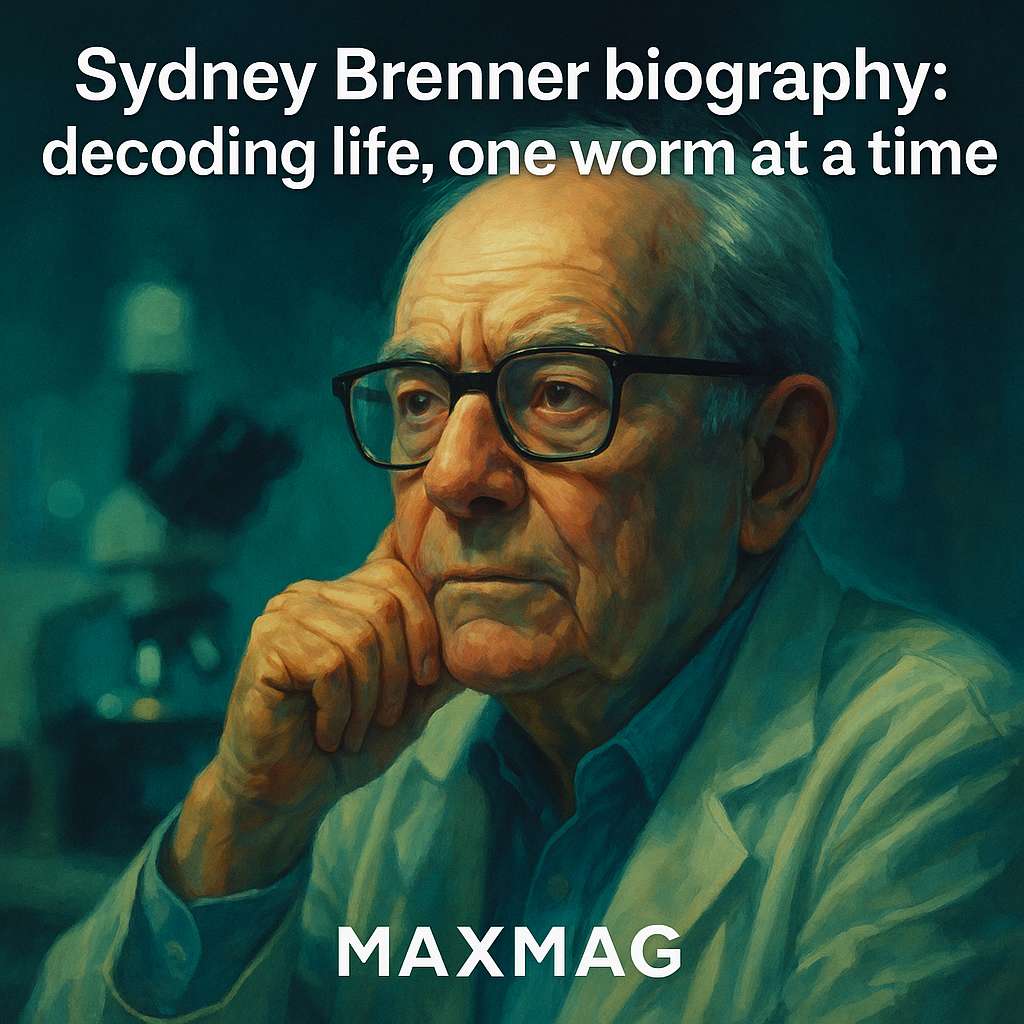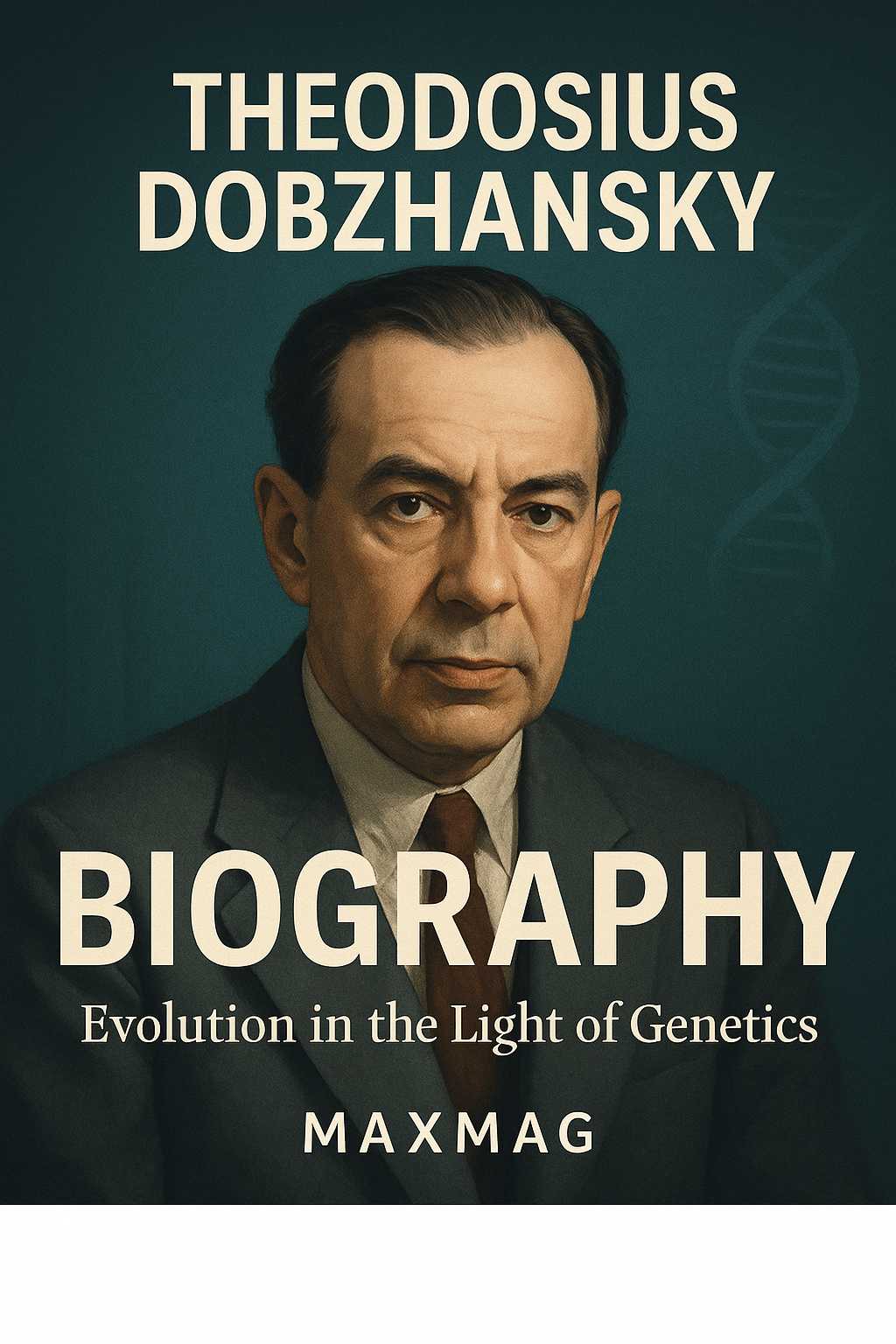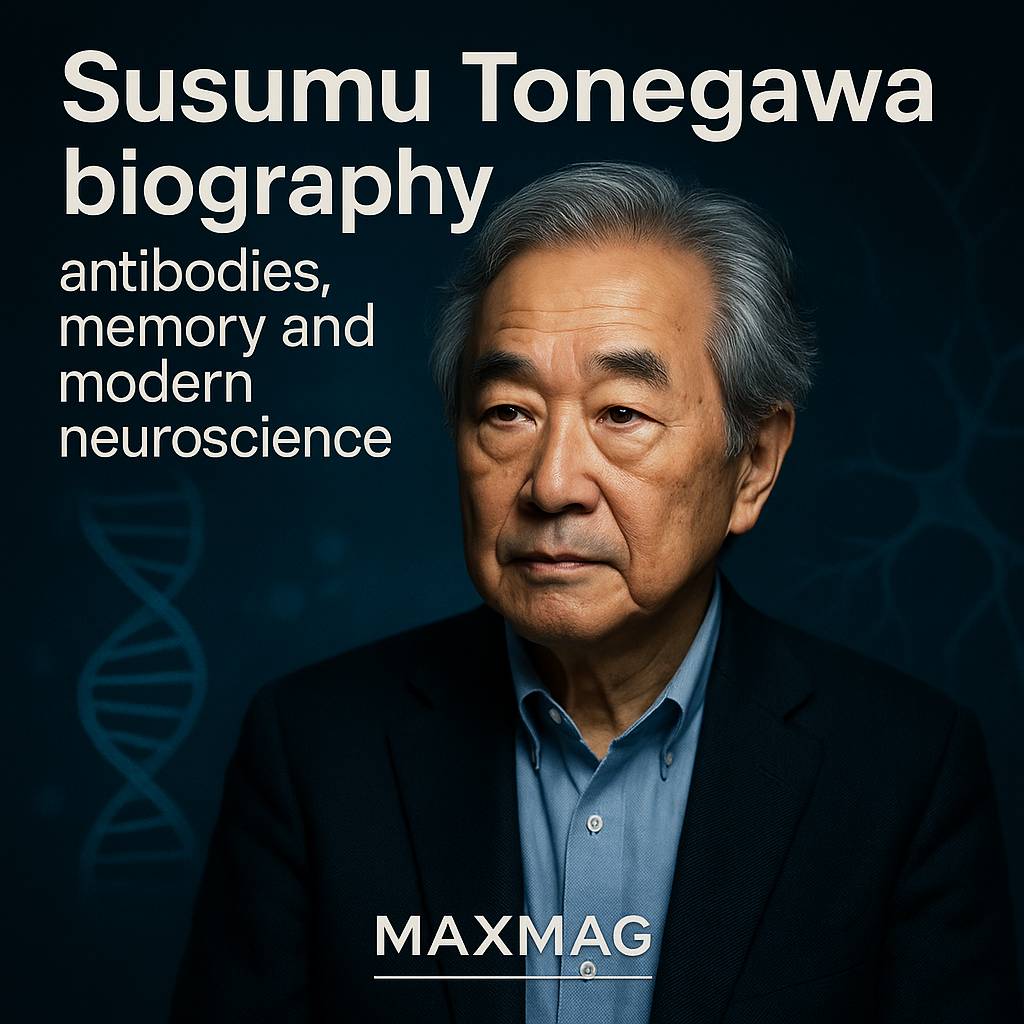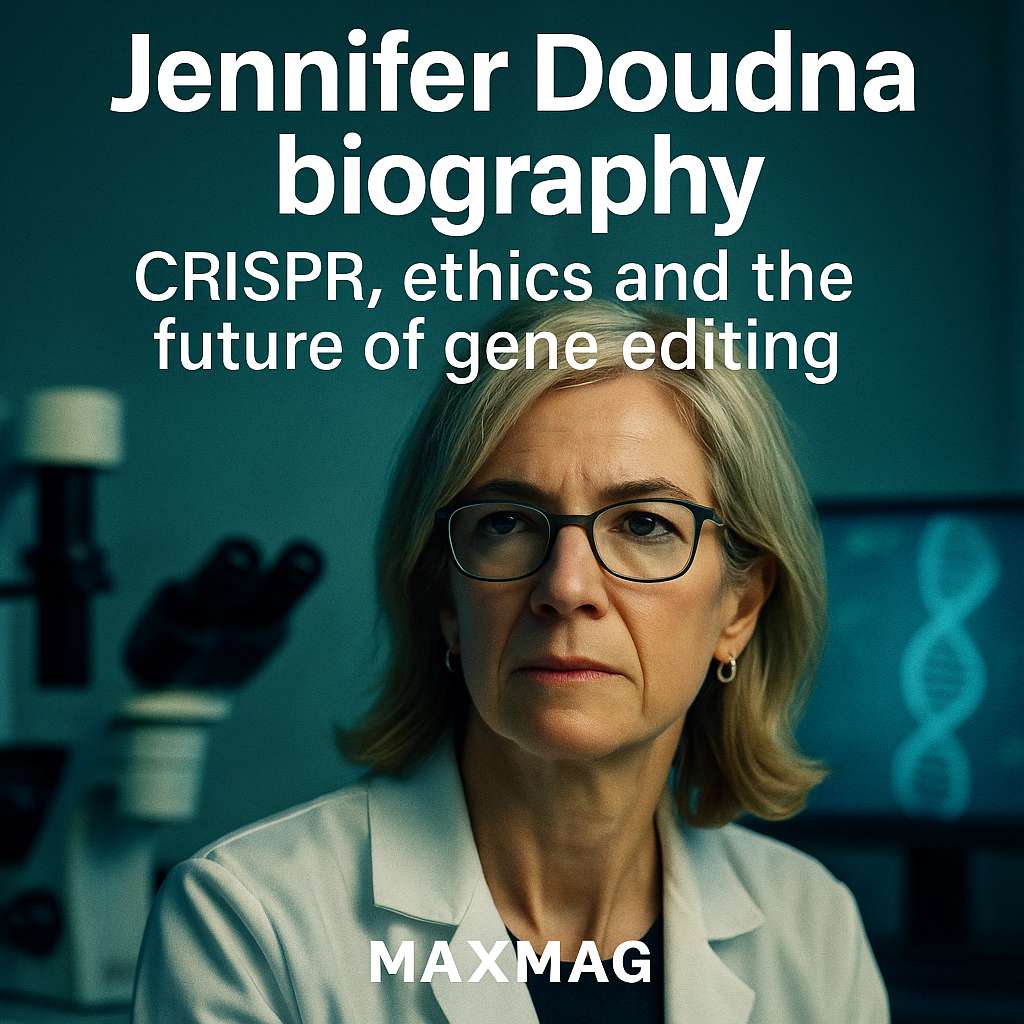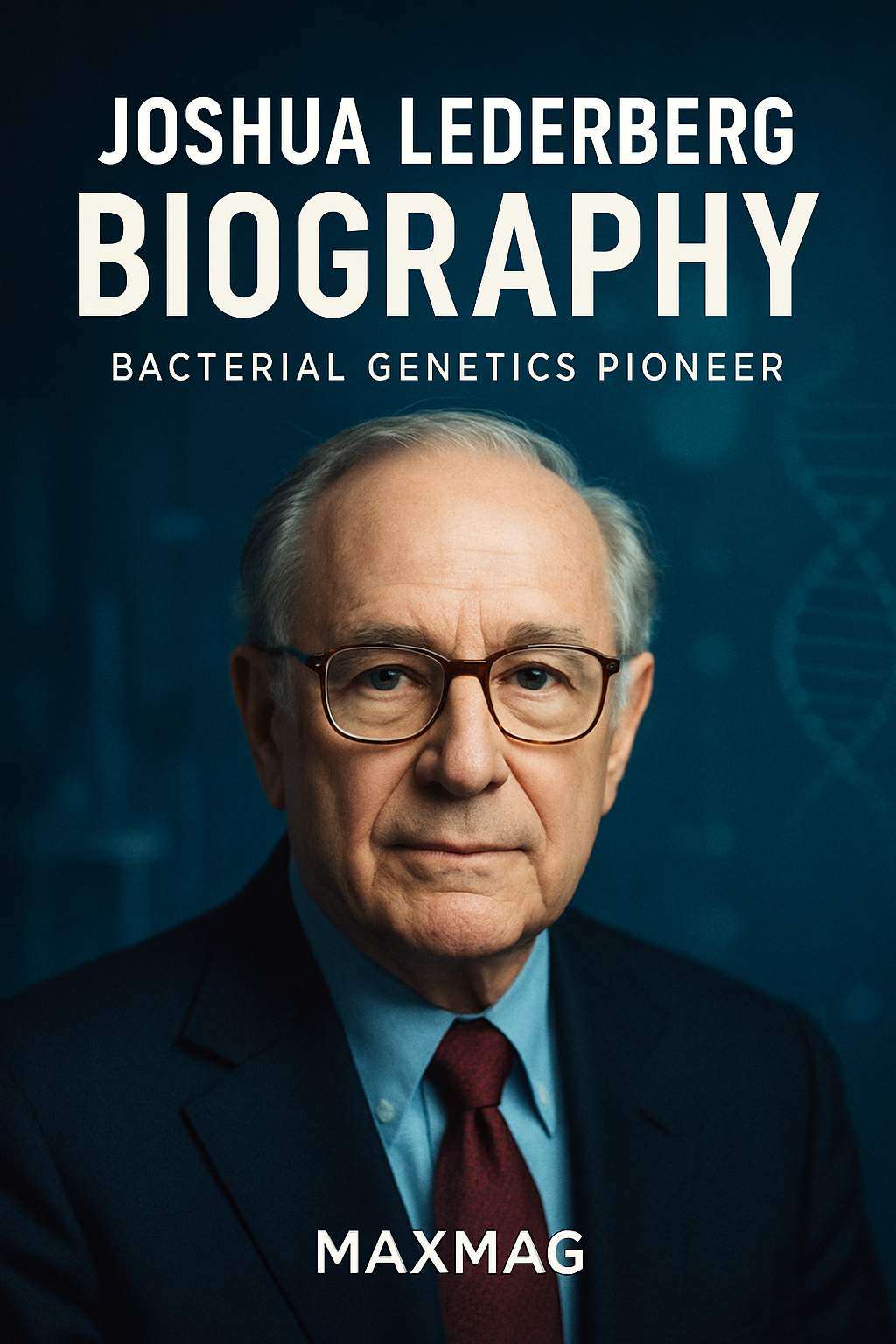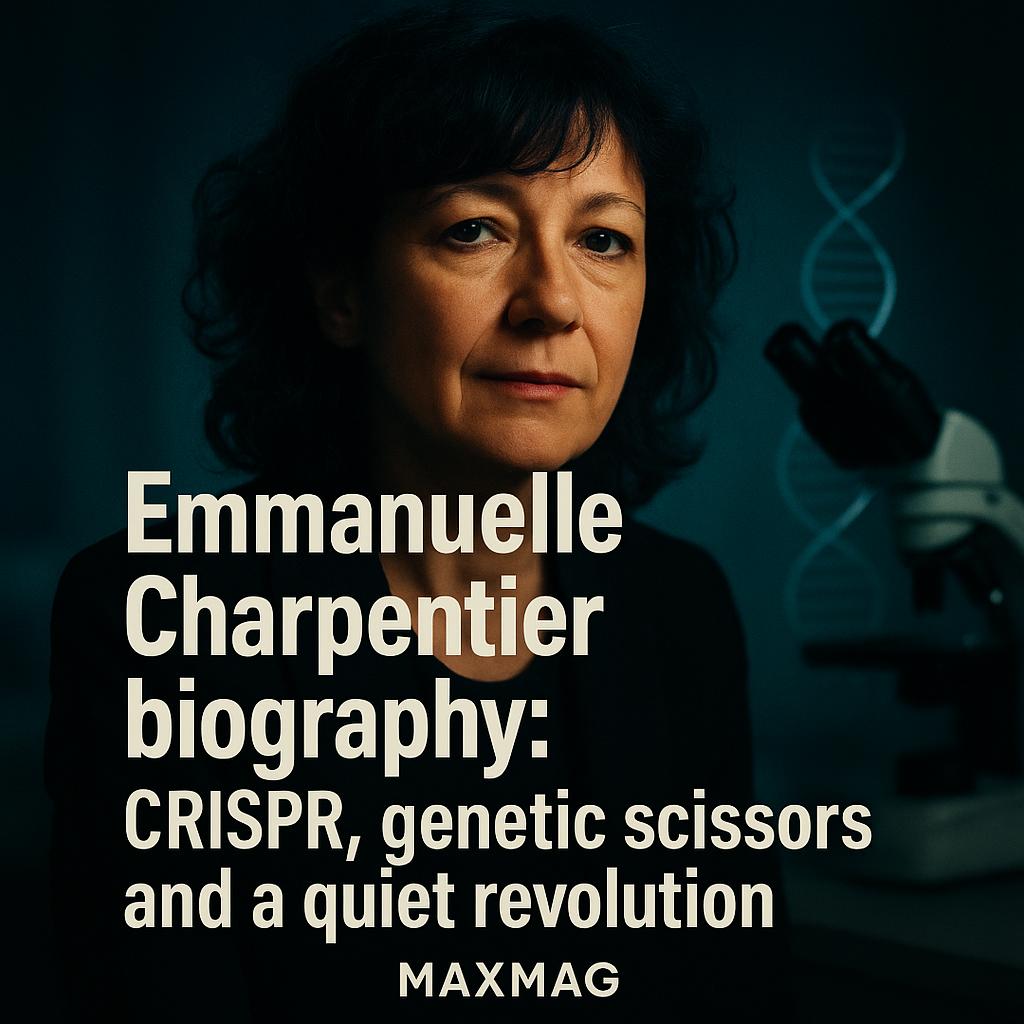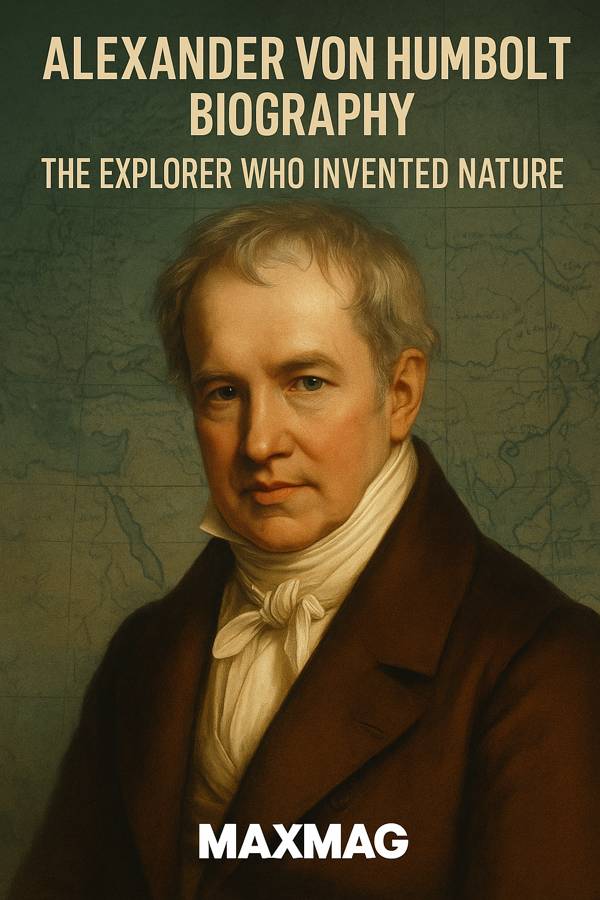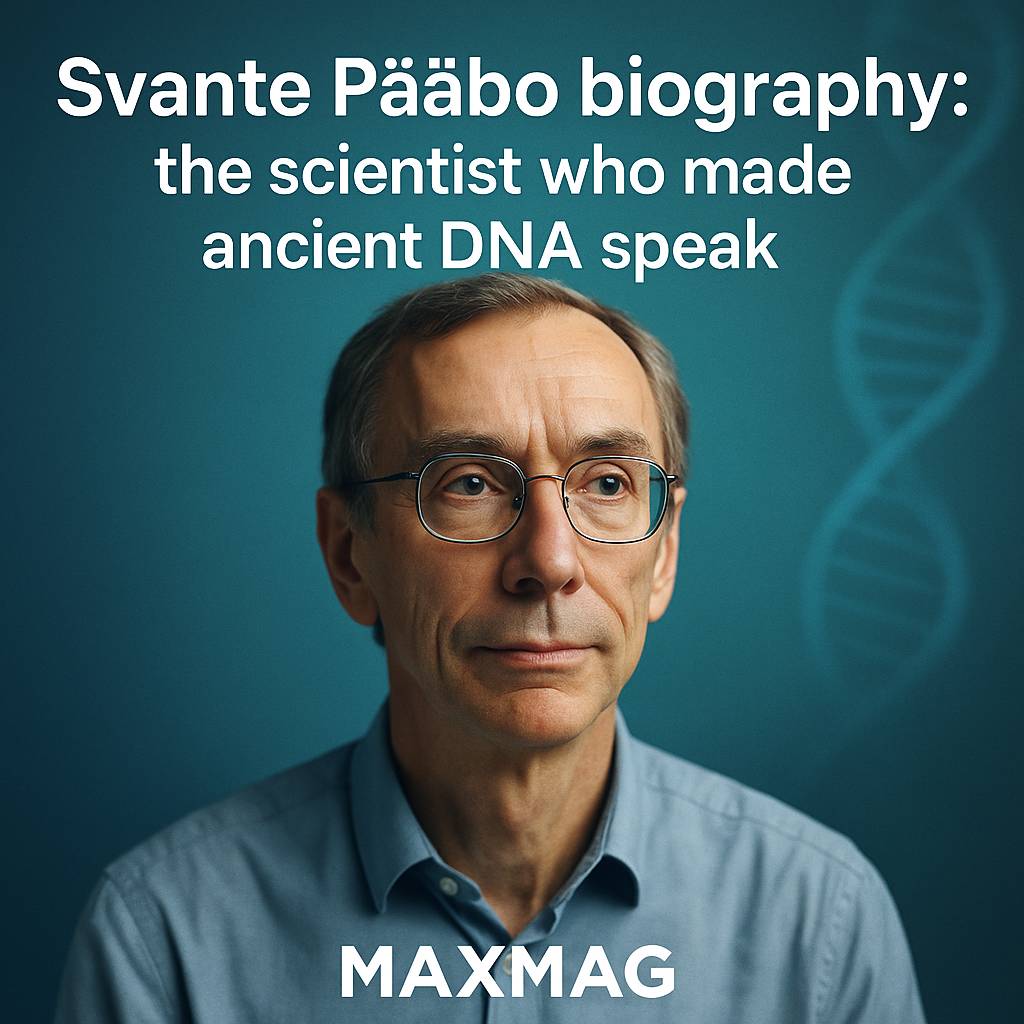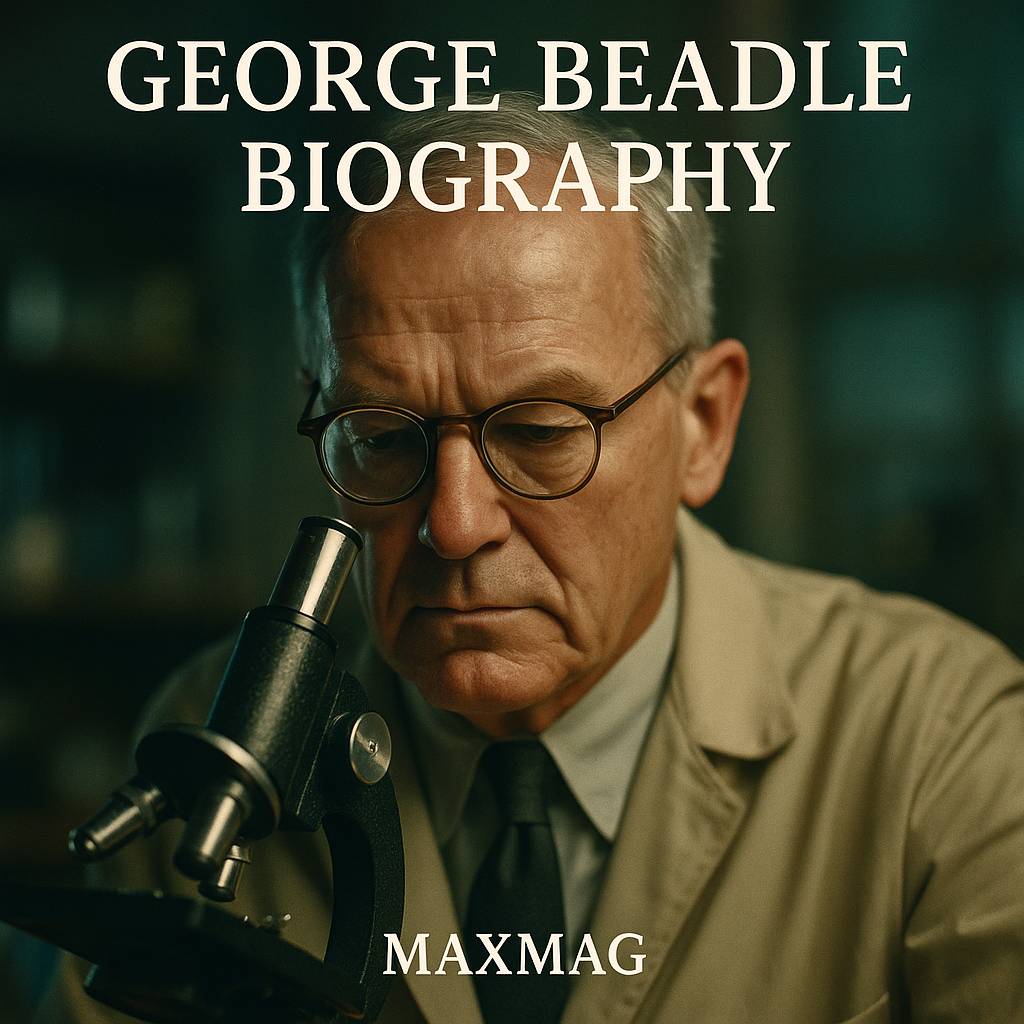
Any honest George Beadle biography has to begin on a patch of Nebraska dirt. In the early 20th century, on a modest farm near the small town of Wahoo, a boy who was expected to become a farmer instead became one of the key architects of modern genetics. His journey from cornfields to Nobel laureate is more than a story of individual brilliance; it is a window into how biology itself changed from a descriptive science into a discipline that could read, and rewrite, the chemical language of life.
This George Beadle biography follows that arc of transformation. It traces how a quiet, practical young man became a central figure in the birth of biochemical genetics; how his experiments on a humble bread mold helped establish the “one gene–one enzyme” idea; and how he later reinvented himself as a university leader wrestling with campus politics, student protests and the ethics of scientific power. Along the way, the George Beadle biography also reveals a person who never quite left the farm behind, even as he stood at the frontiers of laboratory science.
George Beadle biography at a glance
- Who: George Wells Beadle, American geneticist and university president.
- Field & era: Classical and biochemical genetics, 1930s–1960s.
- Headline contribution: Co-founded biochemical genetics by linking individual genes to specific enzymes in the bread mold Neurospora crassa, leading to the one gene–one enzyme hypothesis.
- Why he matters today: This George Beadle biography sits at the crossroads between classical breeding and molecular biology, explaining how we came to see genes not as abstract “factors” but as working instructions for cellular chemistry.
Early Life and Education of George Beadle
Farm roots that shape the George Beadle biography
George Wells Beadle was born in 1903, the son of farmers who ran a modest operation near Wahoo, Nebraska. The landscape of his childhood was rows of corn, changing seasons, and the steady, repetitive work that defined rural life. This early environment is a key chapter in any George Beadle biography: it gave him an intimate familiarity with plants, with the variability of crops, and with the sense that small differences in seeds could mean the difference between abundance and failure.
In school, Beadle was not groomed for greatness. He was a capable student, but there was no clear sign he would become a genetics pioneer. The turning point came when a teacher nudged him toward higher education, suggesting the College of Agriculture at the University of Nebraska. That suggestion, almost casual at the time, redirected the entire trajectory of the George Beadle biography away from a lifetime behind a plough and toward a life at the lab bench.
Discovering genetics at the College of Agriculture
At the University of Nebraska, Beadle found his way into the emerging field of genetics, which was beginning to fascinate plant breeders and biologists alike. For a young man who knew the practical side of crops, the idea that invisible “factors” could control traits in corn and wheat was both strange and compelling. In lectures and in fields set aside for experiments, the George Beadle biography starts to overlap with the broader history of genetics, as he absorbed ideas that had only recently been rediscovered from Gregor Mendel’s work.
Beadle’s mentors encouraged him to continue beyond a bachelor’s degree. He stayed on for graduate work and then moved to Cornell University, where he studied maize genetics in detail. His doctoral research on chromosomal behaviour in corn may sound specialized, but it taught him to think about genes as physical entities, arranged on chromosomes in patterns that could be mapped. This early training grounded the George Beadle biography in classical genetics, long before biochemistry and molecular biology became central to scientific life.
From Nebraska to the wider scientific world
Leaving Nebraska for Cornell and then for fellowships on the East and West Coasts was a leap into a different world. Beadle encountered big-city laboratories, international colleagues, and the rapid circulation of ideas that defined American science between the world wars. In this phase of the George Beadle biography, he evolved from a local farm boy into an ambitious young researcher, comfortable discussing crossing-over, chromosomes and mutant traits with some of the leading figures in the field.
Looking back, it is easy to see how these formative years set him up as a genetics pioneer. He learned the rigour of careful breeding experiments; he picked up the habits of precise record-keeping and cautiously interpreted data; and he developed a trust in experiments as the ultimate court of appeal. All of this would matter when he later proposed bold, almost audacious, claims about genes and enzymes.
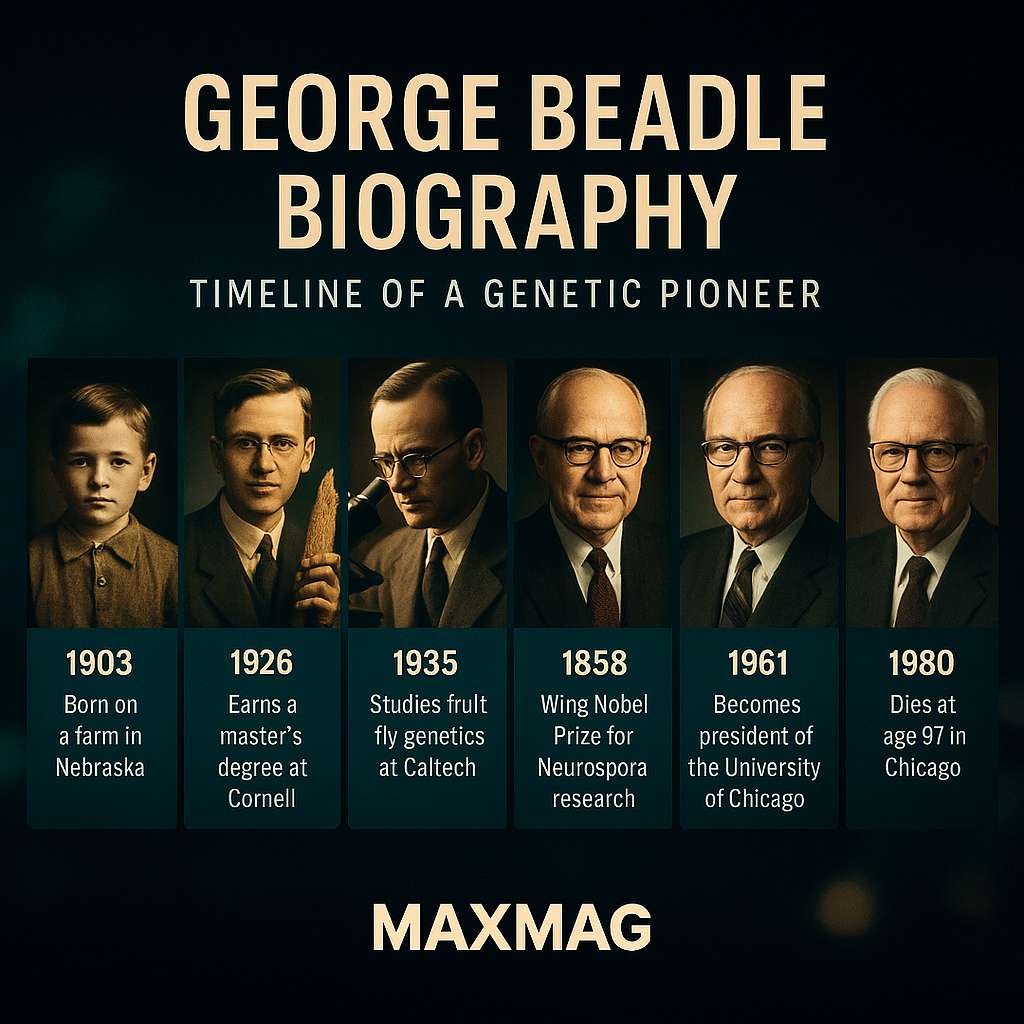
George Beadle biography and the Birth of His Big Ideas
Drosophila and the apprenticeship in classical genetics
Before Beadle turned to fungi, he paid his dues with fruit flies. At the California Institute of Technology, he joined a group that was extending Thomas Hunt Morgan’s pioneering work on Drosophila. Tiny flies in glass vials might seem far from the farm, but this period is essential to the George Beadle biography. It was in these crowded fly rooms that he mastered the logic of inheritance, mapping genes along chromosomes and learning to see mutants as powerful tools rather than oddities.
Working with Drosophila also immersed him in a culture of quantitative thinking. Here, a genetics pioneer had to combine painstaking observation with mathematical reasoning about ratios and recombination frequencies. These skills, honed in the fly lab, would later help Beadle design clean, incisive experiments with fungi that could persuade even sceptical colleagues.
Paris, eye colour and a shift toward biochemistry
A short stay in Paris in the mid-1930s added a new dimension to the George Beadle biography. Collaborating with Boris Ephrussi, he studied the development of eye pigments in fruit flies. This was still genetics, but now with an unmistakable biochemical flavour. Instead of treating eye colour as a simple trait, they analysed it as the end product of a chain of chemical reactions, each potentially controlled by a different gene.
This experience nudged Beadle toward what would later be called biochemical genetics. For readers following the George Beadle biography, this is the hinge moment: the realisation that genes might not just sit on chromosomes determining visible traits, but could be deeply involved in the chemistry of life itself. To explore that possibility, he needed a simpler, more controllable organism than a fruit fly.
Choosing Neurospora: the bold move that defined a career
Beadle’s next decisive move was to shift his attention to the bread mold Neurospora crassa, working closely with Edward Tatum at Stanford University. This choice might seem odd in a George Beadle biography: why abandon the fashionable fruit fly to work on a fungus growing on stale bread? The answer was methodological. Neurospora grew quickly, could be easily mutagenised, and had a simple nutritional profile. That simplicity allowed Beadle and Tatum to link specific genetic changes to equally specific biochemical defects.
In the broader context of genetics history, this was a daring step into largely uncharted territory. It was also the step that would turn the George Beadle biography into a central chapter in the story of 20th-century science, as biochemical genetics emerged from the shadows and began to transform our view of genes.
Key Works and Major Contributions of George Beadle
The one gene–one enzyme hypothesis
The most famous episode in any George Beadle biography is the series of Neurospora experiments that led to the one gene–one enzyme hypothesis. Beadle and Tatum bombarded spores with X-rays, creating mutants that could no longer grow on minimal medium. By adding specific nutrients back into the growth medium, they worked out which metabolic pathway was broken in each mutant.
They found that many mutants were rescued by adding just a single amino acid or vitamin. The conclusion was radical for its time: each mutant strain seemed to have lost the function of one enzyme in a larger biochemical chain. From this, Beadle and Tatum proposed that each gene corresponded to a single enzyme. The one gene–one enzyme hypothesis, although later refined to “one gene–one polypeptide” and then to more complex formulations, remains the centrepiece of the George Beadle biography and a cornerstone in the history of molecular genetics.
From enzyme pathways to genetic thinking
What made this contribution so powerful was not just the clever experimental design, but the intellectual leap it required. Before Beadle, many scientists thought of genes as mysterious units that somehow influenced traits like eye colour or plant height. After Beadle, it became possible to think of genes as instructions for making specific proteins that carry out the chemistry of life.
For readers of this George Beadle biography, one way to picture the shift is to imagine a factory. Before biochemical genetics, genes were like anonymous managers whose decisions somehow affected how the factory ran. After Beadle and Tatum, genes increasingly looked like detailed job descriptions for individual workers on the production line, each responsible for a specific task.
Maize and the ancestry of corn
In his later scientific work, Beadle circled back to his earliest love: corn. Another important chapter in the George Beadle biography is his effort to understand how modern maize evolved from its wild ancestor, teosinte. Through a series of crosses and careful counting of traits in successive generations, he showed that only a handful of genetic changes were needed to transform a weedy grass into a staple crop.
This work bridged evolutionary biology, plant breeding and genetics history. It suggested that domestication could proceed rapidly once humans began selecting for desirable traits, and it underlined Beadle’s enduring fascination with the practical consequences of genetic variation—a theme that had been present since his days on the Nebraska farm.
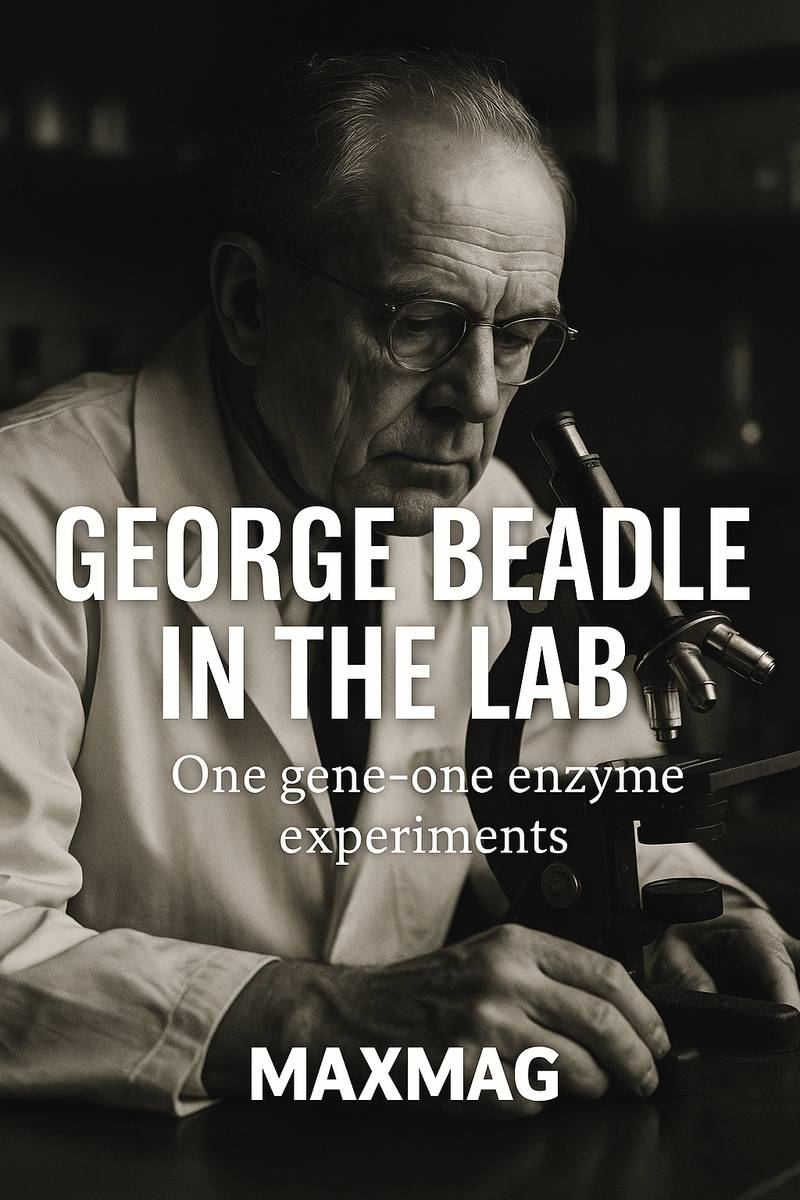
Methods, Collaborations and Working Style
A practical, problem-solving approach
Colleagues often described Beadle as unpretentious and pragmatic. The George Beadle biography is full of scenes in which he chooses methods not because they are fashionable, but because they work. Whether he was crossing maize plants in a field or plating out fungal spores in a lab, he approached problems with the calm, systematic mindset of someone who had grown up solving everyday challenges on a farm.
He preferred experiments that answered clear questions. Rather than chasing grand theories for their own sake, this genetics pioneer designed studies where the result—positive or negative—would cleanly illuminate how genes and biochemical pathways were connected. That attitude made his work particularly convincing to contemporaries who were wary of speculation.
Partnership with Edward Tatum and beyond
No George Beadle biography is complete without Edward Tatum. Their collaboration at Stanford was a model of complementary strengths: Beadle brought conceptual clarity and a talent for framing big questions, while Tatum contributed deep biochemical expertise and meticulous experimental technique. Together, they built the field of biochemical genetics almost from scratch.
Beadle also worked closely with other major figures, from Theodosius Dobzhansky in the fruit-fly years to younger colleagues who would go on to shape molecular genetics. These collaborations anchored the George Beadle biography in a network of scientists who were collectively pushing biology from a descriptive to a mechanistic science.
Mentor, administrator and scientific entrepreneur
As his career progressed, Beadle increasingly moved into roles where he had to organise people as well as experiments. At Caltech and later at the University of Chicago, he helped recruit faculty, secure funding and set research priorities. One can read this phase of the George Beadle biography as the story of a scientist becoming a kind of scientific entrepreneur—someone who builds institutions as well as ideas.
Yet even as an administrator, he remained grounded in the lab. He understood what it meant to troubleshoot a finicky experiment or to worry about grant deadlines. That dual perspective helped him earn the respect of both bench scientists and trustees.
Controversies, Criticism and Misconceptions
Debating the limits of one gene–one enzyme
From the start, the one gene–one enzyme hypothesis drew both admiration and criticism. For some, it seemed too simple. As molecular biology advanced, scientists discovered that many proteins were made of multiple polypeptide chains, sometimes encoded by different genes, and that a single gene could give rise to multiple products. In any serious George Beadle biography, it is important to note that the original formula did not fully capture this later complexity.
Beadle himself understood that his proposal was a first approximation. He saw the one gene–one enzyme idea not as a final word, but as a framework that could be refined. The core insight—that genes direct specific biochemical functions—has proved remarkably durable, even as our picture of genes and proteins has grown more intricate.
Misunderstandings about determinism
Another recurring issue in the George Beadle biography is the accusation of genetic determinism. Some critics worried that linking genes so closely to biochemical events would encourage the view that everything about an organism, including human behaviour, was rigidly programmed in DNA.
Beadle’s own writings suggest a more nuanced view. He argued that genes set possibilities and constraints, but environment, development and chance all played roles. In the wider history of genetics, this tension between genetic control and environmental influence is still very much alive—and the debates that swirl around it today echo the mid-century controversies that Beadle helped to ignite.
University politics and social unrest
As president of the University of Chicago in the turbulent 1960s, Beadle found himself at the centre of protests over civil rights, urban renewal and the Vietnam War. This part of the George Beadle biography has nothing to do with Neurospora, but everything to do with the social responsibilities of science and higher education.
Student sit-ins, community activism and clashes over university housing policies forced Beadle to navigate difficult terrain. To understand his leadership, readers can turn to a detailed institutional profile maintained by the University of Chicago itself, which chronicles how he tried to balance academic freedom, community concerns and government expectations in that era of upheaval (historical overview of the Beadle presidency at the University of Chicago).

Impact on Genetics and on Wider Society
Launching biochemical genetics and molecular thinking
The most direct impact of the work at the centre of the George Beadle biography is the birth of biochemical genetics. By showing that individual genes could be tied to specific steps in metabolic pathways, Beadle and Tatum opened the door to thinking about hereditary diseases, metabolic disorders and developmental processes in a new way.
This shift did more than solve arcane problems in fungi. It set the stage for the later explosion of molecular biology, from DNA sequencing to gene editing. Today, when we talk about defective enzymes in inherited conditions or target individual proteins with drugs, we are living in the world that the one gene–one enzyme hypothesis helped make imaginable.
Changing how universities relate to science and society
Beyond the lab, the George Beadle biography also belongs to the story of how American universities reinvented themselves after World War II. As a senior figure at Caltech and then president of the University of Chicago, Beadle helped shape the model of research universities that rely heavily on government grants, large-scale science infrastructure and international networks of collaboration.
He believed deeply that scientific progress and societal well-being were linked. His public talks often stressed the need for democratic societies to invest in research and education, not as a luxury but as a foundation for economic strength and cultural vitality. In this sense, he contributed to a broader “science and society” discourse that still resonates in debates about funding, academic freedom and the role of experts.
Public communication and the lay reader
Later in life, Beadle wrote for non-specialist audiences, helping to explain genetics in plain language. For a George Beadle biography that values not only discovery but communication, this matters. He did not see genetics as something to be hoarded in specialist journals; he wanted farmers, teachers and curious readers to understand why genes mattered.
This commitment to clarity is mirrored in how we talk about genetics today, from school textbooks to popular science articles. The idea that complex genetic concepts can be made accessible without being trivial is part of his intellectual legacy.
Personal Beliefs, Character and Private Life
A farmer at heart, even in a lab coat
One of the most endearing aspects of the George Beadle biography is how much of the farm boy remained. Even when he was president of the University of Chicago, he planted corn behind the official residence and tended experimental plots near campus. Students and visitors sometimes mistook him for a groundskeeper. For a man who had helped design some of the most sophisticated genetic experiments of his era, this quiet, hands-on hobby said a great deal about his character.
He approached both gardening and science with the same mix of patience and curiosity. The slow unfolding of a crop over a season was, in his eyes, not so different from the gradual emergence of understanding in a long-running experiment. That continuity of attitude gives the George Beadle biography a kind of thematic unity from beginning to end.
Family life and partnership with Muriel Beadle
Beadle’s personal life was marked by two marriages, and the second—to writer Muriel McClure Beadle—brought together science and literature under the same roof. Muriel’s own books and essays, sometimes drawing on their years at the University of Chicago, added narrative texture to the bare facts that might otherwise dominate a George Beadle biography.
The couple shared a deep interest in education, culture and public debate. Muriel’s perspective on campus politics and academic life complemented George’s own, and together they navigated the stresses of leadership during a time of social change. Their partnership reminds us that scientific careers are embedded in families and communities, not pursued in isolation.
Beliefs, doubts and an independent mind
Accounts of Beadle’s worldview suggest an independent, sceptical thinker who was wary of dogma. He took a clear, sometimes blunt stance on religion and superstition, preferring explanations grounded in evidence and reason. This trait, highlighted in many stories that circulate within the George Beadle biography, sometimes made him seem austere, but it also underpinned his scientific integrity.
At the same time, he worried about the ethical implications of emerging genetic technologies. He recognised that the power to alter life carried responsibilities, and he argued that scientists had to think carefully about how their work might be used. In an era when debates over gene editing and biotechnology are front-page news, this dimension of the George Beadle biography feels particularly timely.
Later Years and Final Chapter of George Beadle
From president to elder statesman of science
After stepping down from the presidency of the University of Chicago, Beadle remained active in scientific and educational circles. He took on advisory roles, continued to speak and write about genetics, and stayed in touch with a younger generation of researchers who were turning the foundations he helped lay into the modern edifice of molecular biology.
In these later years, the George Beadle biography shifts tone. The frenetic pace of discovery slows, replaced by reflection and synthesis. Beadle looked back on the trajectory from maize fields to Neurospora to DNA, and he understood himself as part of a larger story in which many hands and minds had contributed.
Illness, death and public remembrance
Beadle’s final years were shadowed by illness, and he died in 1989. The news prompted obituaries and retrospectives that underlined how thoroughly he had reshaped genetics. A contemporary piece in a major West Coast newspaper, for example, described how his work on genes and enzymes had revolutionised the understanding of heredity and noted his leadership at Caltech and the University of Chicago (Los Angeles Times obituary reflecting on Beadle’s life and scientific impact).
These public tributes turned the scientific details of the George Beadle biography into a more general story about curiosity, perseverance and the long arc of innovation. For many readers encountering his name for the first time, the obituaries were not just notices of a death but introductions to a life that had quietly changed the world.
Commemorations and institutional memory
In the decades since his death, Beadle’s name has been given to awards, buildings and schools. Genetics societies honour him with prizes; a research centre and a middle school bear his name. These commemorations ensure that the George Beadle biography remains visible to new generations of students, who may first encounter him on a plaque before discovering his role in textbook diagrams of gene action.
Such honours are symbolic, but they keep the narrative alive. They remind us that the ideas we now take for granted—genes as instructions, enzymes as their products—were once radical propositions advanced by real people working in specific times and places.
The Lasting Legacy of the George Beadle biography in modern science
From Beadle’s lab bench to contemporary genomics
Today’s genome-wide association studies, CRISPR experiments and personalised medicine all rest on a conceptual foundation that this George Beadle biography has tried to illuminate. When researchers scan DNA for variants linked to disease or engineer cells to produce new proteins, they are extending the logic that Beadle and Tatum demonstrated in their Neurospora work: genes specify functions, and by altering those genes, we alter the underlying biochemical machinery.
Of course, the landscape is vastly more complex now than it was in the 1940s. We know about alternative splicing, gene networks, epigenetic modifications and regulatory RNA. Yet the essential insight of the George Beadle biography—that genes act in concrete biochemical ways, not as vague “essences”—still structures how we think about life at the molecular level.
Ethical reflections and the future of genetics
There is also an ethical legacy. Beadle was among the scientists who understood that genetics would raise difficult questions about human identity, responsibility and inequality. In that sense, the George Beadle biography is part of a longer conversation about how far we should go in altering organisms, including ourselves.
As we face choices about gene therapy, germline editing and the ownership of genetic data, revisiting this George Beadle biography can help ground the discussion. It reminds us that our current powers emerged step by step, from experiments on corn, flies and fungi, and that each step brought with it new possibilities and new obligations.
Why the George Beadle biography still matters
Ultimately, what makes this George Beadle biography worth reading is not only the list of achievements it contains, but the pattern it reveals. A boy who almost stayed a farmer became a central figure in the transition from classical to molecular genetics; a lab-based researcher became a university leader wrestling with social unrest; an advocate of rigorous science became an early voice in debates about the social responsibilities of genetics.
If we want to understand how modern biology came to be, and how it became intertwined with universities, public funding and ethical controversy, we cannot ignore the George Beadle biography. It is a story about genes and enzymes, but also about institutions, values and the enduring human desire to make sense of life at its most basic level.
Frequently Asked Questions about George Beadle biography
Q1: Who was George Beadle in the context of modern genetics?
Q2: What is the one gene–one enzyme hypothesis associated with the George Beadle biography?
Q3: Why did George Beadle choose Neurospora instead of fruit flies for his famous experiments?
Q4: How did George Beadle’s background as a farm boy influence his scientific career?
Q5: What roles did George Beadle play outside the laboratory?
Q6: How is the legacy of George Beadle biography visible in today’s science?

